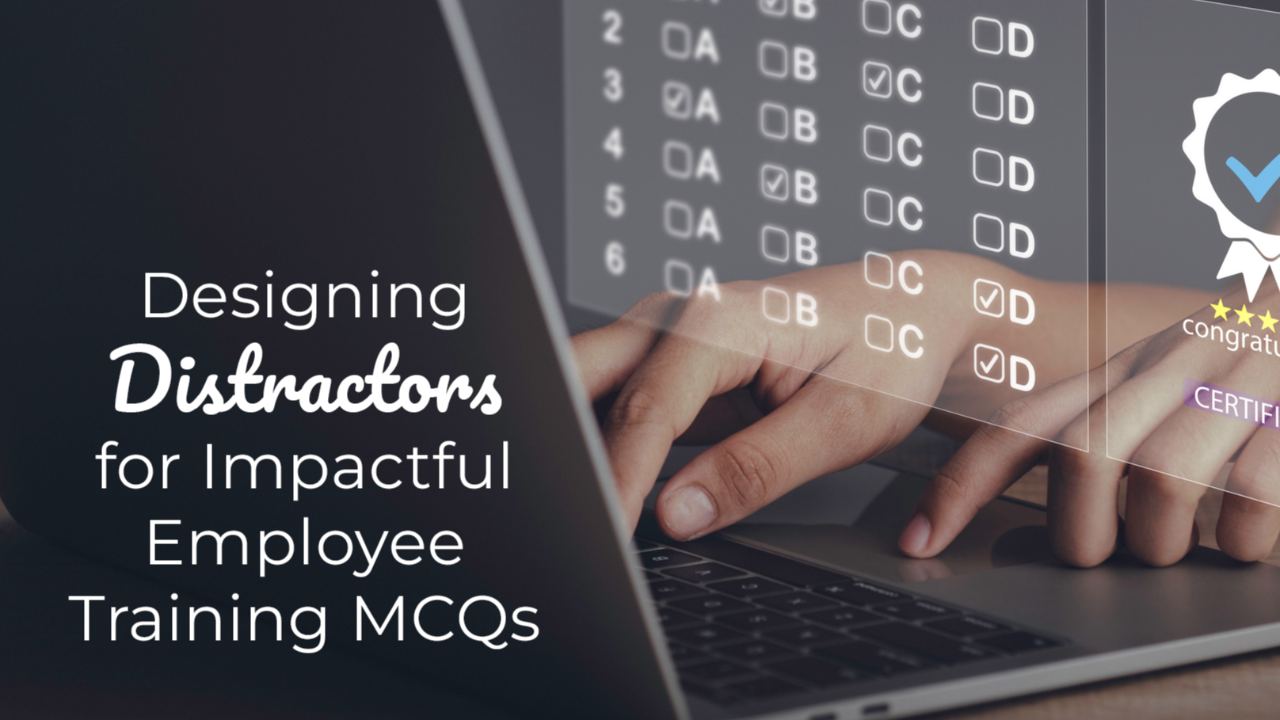Aligning MCQs with Learning Outcomes for Maximized Training Impact
by Amanda Kizer

In any effective employee training program, assessment questions should reflect the intended learning outcomes. When it comes to crafting multiple-choice questions (MCQs), aligning each item with the learning outcomes ensures that your assessment accurately measures the knowledge and skills your program aims to impart.
Aligning MCQs with Learning Outcomes
The first step in creating MCQs is to refer to the learning outcomes of the training program. These outcomes should provide the framework for each question, guiding what each question should measure and how.
Crafting Questions Aligned with Learning Outcomes
Consider the following examples related to a training program on effective communication that illustrate the progression from poor to quality learning outcome alignment.
- Poor alignment: Which famous person said, "The most important thing in communication is hearing what isn't said"? (Trivia, unrelated to learning outcomes)
- Better alignment: What are the key components of effective communication? (Recall, aligned with learning outcomes)
- Best alignment: Given a scenario where miscommunication occurred, how would you use the principles of effective communication to rectify the situation? (Application, aligned with learning outcomes)
The first question is trivial and doesn't connect with the learning outcomes. The second is better, as it aligns with the objective of understanding the components of effective communication. However, the third question asks participants to apply the principles of effective communication to a realistic scenario, thereby closely aligning with the practical, real-world application intended by the learning outcome.
- Poor alignment: Who invented the telephone? (Irrelevant trivia, unrelated to learning outcomes)
- Better alignment: What role does active listening play in effective communication? (Understanding, aligned with learning outcomes)
- Best alignment: Describe how you would use active listening in a team meeting to ensure everyone feels heard and understood. (Application, aligned with learning outcomes)
In the first example, the question is irrelevant to the learning outcome. The second question tests understanding of a key concept from the training, aligning with the learning outcomes. The third question asks for a practical application of the concept, demonstrating a deeper alignment with the learning outcomes.
- Poor alignment: How many languages are spoken worldwide? (Irrelevant trivia, unrelated to learning outcomes)
- Better alignment: What is the importance of clarity in communication? (Understanding, aligned with learning outcomes)
- Best alignment: How would you ensure clarity in your communication when delivering complex instructions to a team member? (Application, aligned with learning outcomes)
The first question is irrelevant to the training content. The second question aligns with the learning outcome by testing understanding of a key communication principle. The third question pushes further, asking for a practical application of the concept in a realistic situation.
Review Your Training Assessment Questions
Here are actions you can take to start evaluating and improving your multiple choice assessment questions.
- Review Learning Outcomes. Go through each learning outcome of your training program and ensure each is covered by your assessment questions.
- Check Relevance. Ensure each question is relevant to the learning outcomes. If it doesn't directly measure the intended knowledge or skills, consider revising it.
- Emphasize Application. If possible, incorporate scenario-based questions that prompt trainees to apply their knowledge. This approach can more accurately reflect many learning outcomes, particularly those centered on practical skills or decision-making.
By ensuring your MCQs align with your training program's learning outcomes, you can accurately assess the effectiveness of your training and ensure that employees are gaining the intended knowledge and skills.
References:
Haladyna, T., Downing, S., & Rodriguez, M. (2002). A Review of Multiple-Choice Item-Writing Guidelines for Classroom Assessment. Applied Measurement in Education, 15(3), 309-334.
You May Also Like
These Related Stories

3 Ways to Boost Employee Performance with Mental Models

Boosting Employee Performance with the KMO Model


No Comments Yet
Let us know what you think